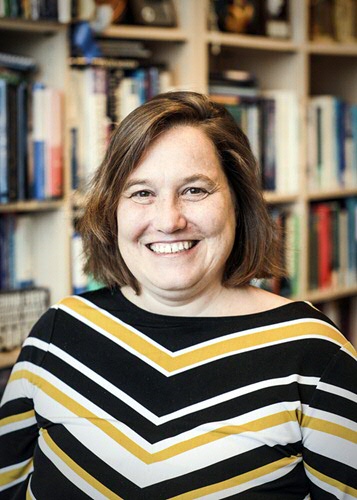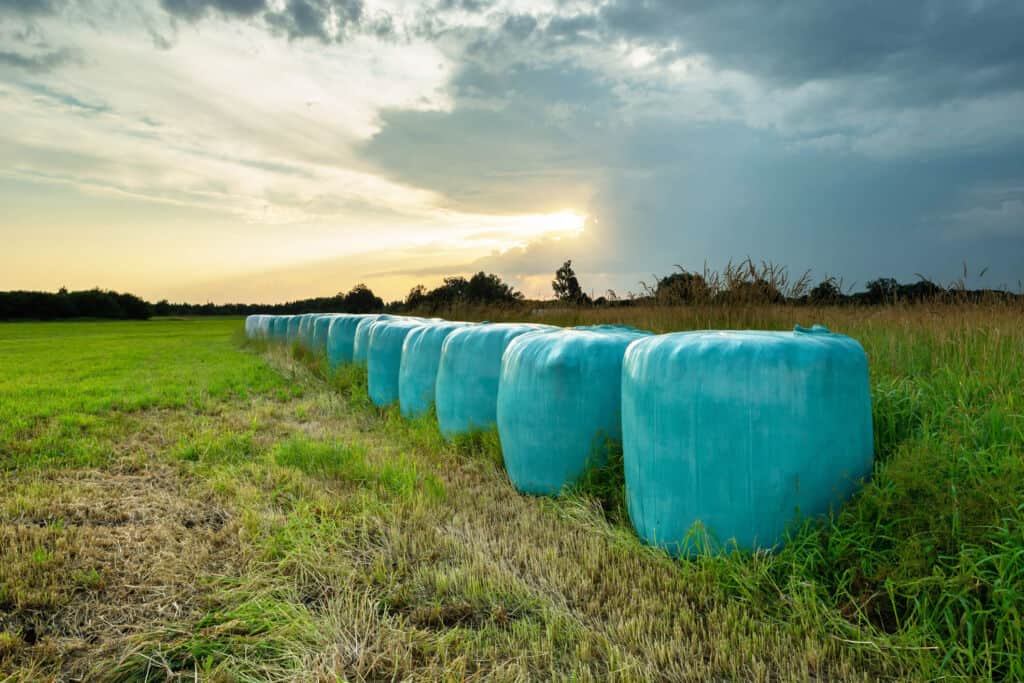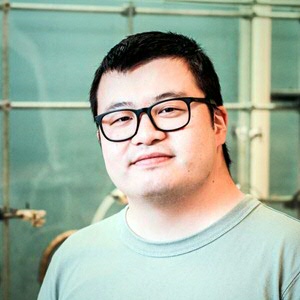Recyclable plastics for a sustainable future
Chongnan Ye is a member of the research group led by Katja Loos and is working on new, sustainable materials. For his PhD research, he created a library of promising, biobased molecules. The research is a unique collaboration between the University of Groningen (UG) and NHL Stenden University of Applied Sciences in Emmen, part of the University of the North.
Originally published in UG central news
‘Traditional plastics are no longer appropriate in this day and age,’ says polymer chemist Chongnan Ye. ‘They’re based on fossil resources, they’re difficult to recycle, and they pollute the environment. We’re working on sustainable alternatives that deliver improvements on all these fronts.’ By ‘we’ he means the hybrid research group led by Katja Loos, Professor of Macromolecular Chemistry and New Polymeric Materials, and Rudy Folkersma and Vincent Voet of the Circular Plastics lectorate at NHL Stenden University of Applied Sciences in Emmen. ‘Researchers from the University of Groningen and NHL Stenden are collaborating on applied research, with support from the University of the North and the northern provinces’, explains Loos in her office at the Zernike complex. ‘It’s a thoroughly enjoyable and dynamic collaboration. Although our work is very applied, we’re also working on very fundamental questions.’

Cross-connections
One of the questions that the team is trying to answer is: can you make plastics from sustainable raw materials, such as sugar, that are both easy to recycle and have the strength and durability that many applications require? ‘That’s a fundamental question’, explains Katja, ‘because the strength of plastics is often down to the properties of the elongated molecules – the polymers – that make up the plastic. For example, some plastics have a kind of net structure, which makes the material very strong, but also makes it difficult to recycle.’ For his PhD research, Chongnan therefore wanted to find out whether it is possible to increase the flexibility of those bonds and still maintain the quality. ‘It turns out that it is’, he explains, sitting at Katja’s desk. ‘I developed a whole set of molecules with those dynamic bonds. All of them are biobased molecules with just the right combination of properties.’ One of the raw materials for these materials is malic acid, which is derived from apples and not made synthetically in the lab. ‘But you could also consider many other suitable raw materials, for example all kinds of other acids, as well as sugars, including starch, which consists of numerous glucose units.’

Agricultural plastic
Katja shares a great example: another PhD student in her group is working on plastic films made from starch. This can be used, among other things, to make the plastic film that farmers use to protect their crops from frost in spring. Currently, farmers often use heavy agricultural film for this, which is polluting to make and also pollutes the environment with microplastics. So, using starch as a raw material has many advantages: you can use waste from the potato industry as a base, you cut down on the use of fossil resources, and you avoid polluting the land. On top of that, farmers don’t need to remove the film at the end of the season; it is naturally broken down by micro-organisms into carbon dioxide and water. Biobased plastics have the potential to be used for a wide range of applications, Chongnan explains, from 3D-printed prosthetics to packaging materials. ‘Here we have developed a membrane that you can use to separate oil and water’, he says. ‘That could prove useful in the process industry, but also, for example, in the event of oil spills at sea.’ This application won Chongnan the people’s choiceaward of the ‘2021 The Best Tech Idea’ competition organized by KIJK magazine, adds Katja proudly.

The best of both worlds
Both scientists agree that one of the challenges is the transition from research to practice. ‘In the lab, you might make a few hundred grams of such materials, at most’, explains Chongnan. ‘But for industrial applications, you need to be able to scale up that process – at least up to tens of kilos, usually more.’ In the hybrid research group, students and staff from the UG and NHL Stenden are working together to investigate the most effective way of doing this while keeping costs low and maintaining quality. ‘It is precisely with challenges like these that cooperation between theory and practice becomes so critical’, says Katja. ‘As does the involvement of companies. They tell us exactly what they need.’ Should a university actually be conducting this kind of research? Is it not perhaps a little too focused on practical applications? Katja pauses to think before answering. ‘I originally started out as a real fundamental scientist’, she says eventually. ‘I always want to know exactly how things work on a chemical level, how polymers behave and why. But I gradually began to realize that there are always useful applications for that knowledge somewhere. And we don’t want to produce knowledge for knowledge’s sake either. Quite the opposite, actually: if you want to answer real-life questions properly, you always need that fundamental understanding. And that’s the real strength of the cooperation between the UG and NHL Stenden.’ Chongnan adds: ‘We want the best of both worlds – we want to improve theory and practice. Working together has real benefits for us. By brainstorming together and trying things out, you make the most progress.’
University of the North
The University of the North (UvhN) is a knowledge and innovation network of five knowledge institutions – the University of Groningen, Hanze University of Applied Sciences, the University Medical Center Groningen, NHL Stenden University of Applied Sciences (Emmen), and Van Hall Larenstein University of Applied Sciences (Leeuwarden) – in the three northern provinces. They join forces to combine research, teaching, and innovation to tackle societal issues such as the energy transition, the circular economy, healthcare, and digitalization. In this endeavour, they often work closely with industry. The UvhN also receives support from the national government.
www.universiteitvanhetnoorden.nl
Katja Loos (1971) is originally from Germany, where she studied chemistry and obtained her PhD. She has been working at the University of Groningen since 2003; in 2012 she was appointed Professor of Macromolecular Chemistry and New Polymeric Materials. She champions the collaboration between theory and practice within the University of the North.
Chongnan Ye (1992) studied materials science at the University of Jinan (China). In 2014, he moved to the University of Twente to pursue a Master’s degree in Chemical Engineering, which he completed in 2016. From 2017 to 2022, he carried out his PhD research at the University of Groningen as part of Loos’s Hybrid research group on Biopolymer and Recycling Innovations' (HyBRIt). Chongnan obtained his PhD on 17 May this year and has since been continuing his research as a postdoc.
Text: Nienke Beintema
More news
-
15 September 2025
Successful visit to the UG by Rector of Institut Teknologi Bandung
